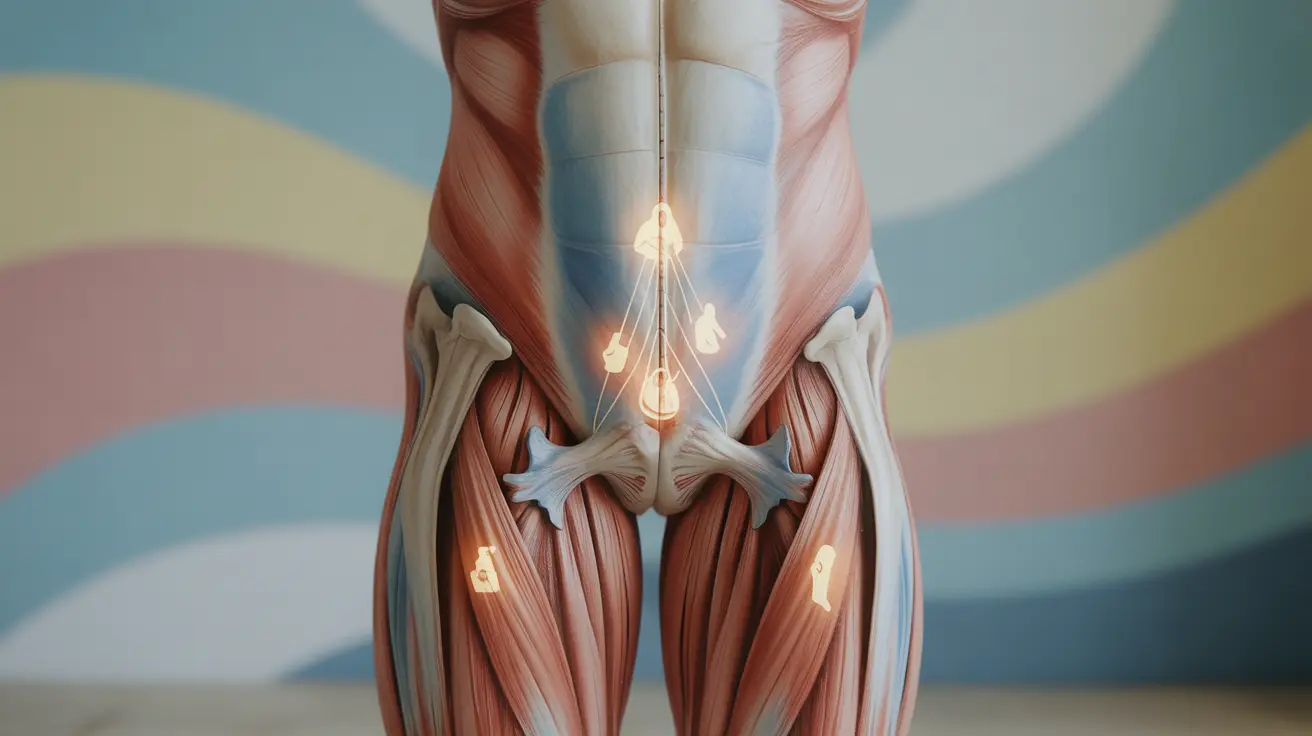The connection between physical and emotional well-being has long been recognized in both traditional healing practices and modern medicine. One fascinating aspect of this relationship is how emotional trauma can manifest physically in our hip region, affecting both our movement and emotional state. Understanding how trauma stored in hips impacts our overall wellness is crucial for healing and maintaining optimal health.
This comprehensive guide explores the intricate relationship between emotional trauma and hip tension, offering insights into recognition, release, and recovery methods that can help restore both physical and emotional balance.
Understanding the Hip-Emotion Connection
The hips serve as more than just a physical joint - they're often referred to as the body's emotional center. This area houses the psoas muscle, which is intimately connected to our fight-or-flight response and can hold tension from past traumatic experiences. When we experience stress or trauma, this muscle often contracts as a protective mechanism, potentially leading to chronic tension and emotional blockages.
Physical Signs of Emotional Trauma in the Hips
Recognizing the physical manifestations of trauma stored in hips is the first step toward healing. Common indicators include:
- Chronic hip tightness or stiffness
- Lower back pain
- Difficulty with hip-opening movements
- Reduced range of motion
- Unexplained discomfort when sitting for long periods
- General feeling of heaviness in the hip area
The Role of the Psoas Muscle
The psoas muscle plays a crucial role in both physical stability and emotional regulation. This deep-seated muscle connects the lumbar spine to the femur and is often called the "muscle of the soul." When stressed or traumatized, the psoas can become chronically contracted, leading to both physical discomfort and emotional distress.
Therapeutic Approaches for Release
Physical Methods
Several physical approaches can help release trauma stored in hips:
- Gentle hip-opening yoga poses
- Mindful stretching exercises
- Somatic experiencing techniques
- Professional massage therapy
- Trauma-informed physical therapy
Emotional Release Techniques
Combining physical work with emotional processing is essential for complete healing:
- Mindfulness meditation
- Breathing exercises
- Body scanning practices
- Emotional release journaling
- Professional trauma counseling
Yoga Poses for Hip Opening
Specific yoga poses can help release tension and emotional blockages stored in the hips. Some beneficial poses include:
- Pigeon pose (with modifications as needed)
- Butterfly pose
- Child's pose
- Happy baby pose
- Gentle lunges
It's important to approach these poses mindfully and never force the body into positions that cause pain or extreme discomfort.
Frequently Asked Questions
What are the common symptoms of trauma stored in the hips, and how do they affect emotional well-being?
Common symptoms include chronic hip tension, lower back pain, and restricted movement. These physical symptoms often correlate with emotional manifestations such as anxiety, emotional numbness, or unexplained sadness. The connection between physical discomfort and emotional well-being can create a cycle that affects overall quality of life.
How do you release trauma stored in the hips through exercises or therapies?
Trauma can be released through a combination of gentle physical exercises, yoga poses, somatic experiencing, and professional therapy. The key is to approach release work slowly and mindfully, incorporating both physical movement and emotional processing techniques.
Can hip pain or stiffness be a sign of unresolved emotional trauma, and if so, why?
Yes, hip pain or stiffness can indeed signal unresolved emotional trauma. The body's stress response system can cause the psoas muscle and surrounding hip tissues to contract and hold tension as a protective mechanism, leading to physical discomfort that reflects emotional challenges.
What role does the psoas muscle play in storing emotional stress, and how can it be safely released?
The psoas muscle is central to our fight-or-flight response and can hold emotional stress through chronic tension. Safe release involves gentle stretching, trauma-informed bodywork, and gradual strengthening exercises, always working within comfortable limits and preferably under professional guidance.
Are there any specific yoga poses or stretches that can help reduce tension and emotional blockages in the hips?
Yes, several yoga poses are particularly effective for hip opening and emotional release. These include pigeon pose, butterfly pose, child's pose, and gentle lunges. It's crucial to practice these poses mindfully, respecting your body's limits and working with a qualified instructor when possible.




